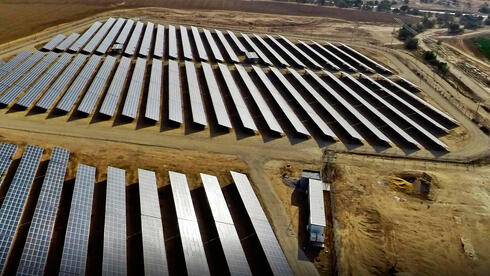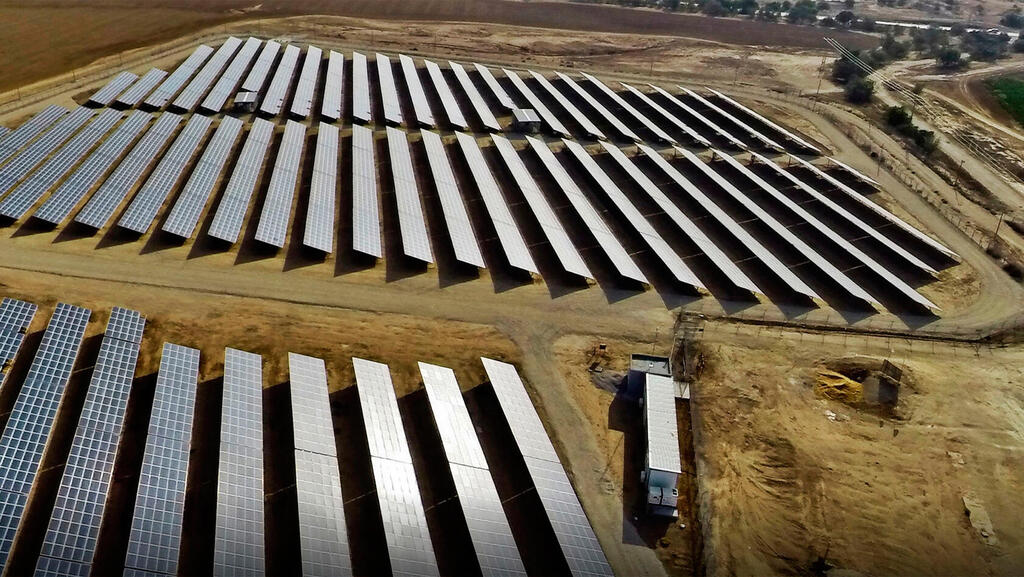
Enlight didn’t live up to expectations and learned that Nasdaq has its own rules
The renewable energy company presented its financial reports for the fourth quarter and all of 2023 and revealed a double-digit jump in revenue and a triple-digit jump in net profit. However, due to the drop in electricity prices in the US, it missed analysts' forecasts and the stock fell by 5.4%
Many Israeli companies aspire to be traded on the esteemed Nasdaq. But Nasdaq has its own rules, and companies may sometimes discover them in not so pleasant ways.
This is what happened on Monday to Enlight, one of the largest renewable energy companies in Israel. The company, which is managed by Gilad Yavetz, published its financial reports for the fourth quarter of 2023 and for the entire year. This is the fourth time that Enlight, which trades at a value of NIS 7.24 billion ($2 billion), publishes reports according to Nasdaq rules, after becoming a dual-listed company exactly a year ago, at the end of February 2023.
On the face of it, Enlight's financial results were impressive. A double-digit jump in revenue, and a triple-digit jump in net profit, but investors sent Enlight's stock down by up to 8% at the start of trading on the Tel Aviv Stock Exchange. The company's stock ended the trading day down 5.4%.
The reason for the sharp declines lies in the fact that Enlight narrowly missed the analysts' forecasts - one of the holy grails of Wall Street, where investors do not hesitate to send shares down sharply due to negative sentiment resulting from missing forecasts, lowering forecasts, or a decision not to publish forecasts at all, similar to Wix, which experienced a fall of 25% in one day when in February 2022 it published its reports for 2021, but did not provide forward forecasts.
Enlight's revenues in the fourth quarter amounted to $74 million, a jump of 21% compared to revenues of $61 million in the same period last year. Revenues in 2023 as a whole were $256 million, a jump of 33% compared to revenues of $192 million in 2022. The increase in income is due to the connection of new projects to the electricity grid. That is, Enlight started selling electricity from them. These are projects with a capacity of 487 megawatts, of which 76 megawatts were connected in the fourth quarter. This brought the company's total installed capacity to 1.8 gigawatts.
But analysts expected more. They predicted average revenues of $89 million in the quarter and almost $267 million for the entire year. This is not a significant gap, but as mentioned, Wall Street tends to give a lot of weight to the issue of forecasts. The miss of the forecasts occurred due to the drop in electricity prices in the last quarter of the year, while many analysts formulated their forecasts at an earlier time, when electricity prices were higher.
This was also linked to the net profit line. In the fourth quarter, the net profit was $16 million, an increase of 48% compared to the net profit of $11 million in the fourth quarter of 2022. For the entire year, the net profit amounted to $98 million, a jump of 157% compared to the net profit of $38 million in 2022. The net profit for the year reflects a profit of $0.61 per share, while the analysts had predicted a profit of $0.7 per share.
Enlight's expectation for 2024 is to end the year with revenues of $335-360 million, which is about 36% more than the revenues of 2023, if we refer to the middle of the forecast range. This increase should happen thanks to a significant connection of projects to the electricity grid during the year. Enlight is expected to connect another 543 megawatts of production capacity during the year, which will increase the portfolio by 29%, and another 1.6 gigawatts of storage, which will multiply the portfolio sixfold.
When you look at Enlight's results in 2023, you can see that revenues from Western Europe jumped by 53% and the continent is already responsible for 35% of the company's revenues. However, Enlight intends to change this situation, since most of its backlog is in the U.S., which is currently responsible for only 1% of revenues, after a project with a capacity of 106 megawatts was connected last year. But since 61% of the backlog, which stands at 9.5 gigawatts, is in the U.S., this picture is about to change.
This is also the reason, or at least one of them, that Enlight decided to go public in the U.S. and become a dual-listed company. Its guiding logic was that if most of the company's backlog is in the U.S., it is better for the company to trade on a local stock exchange and develop relationships with the local investors, who are the largest investors in the world.
Enlight issued in February of last year and raised $252 million from investors, at a slight discount to the share price on the Tel Aviv Stock Exchange at the time. The share price was $18 and is now $16.8. As mentioned, the company's value is NIS 7.24 billion, similar to that of its main competitor, Energix, controlled by Alony Hetz.














